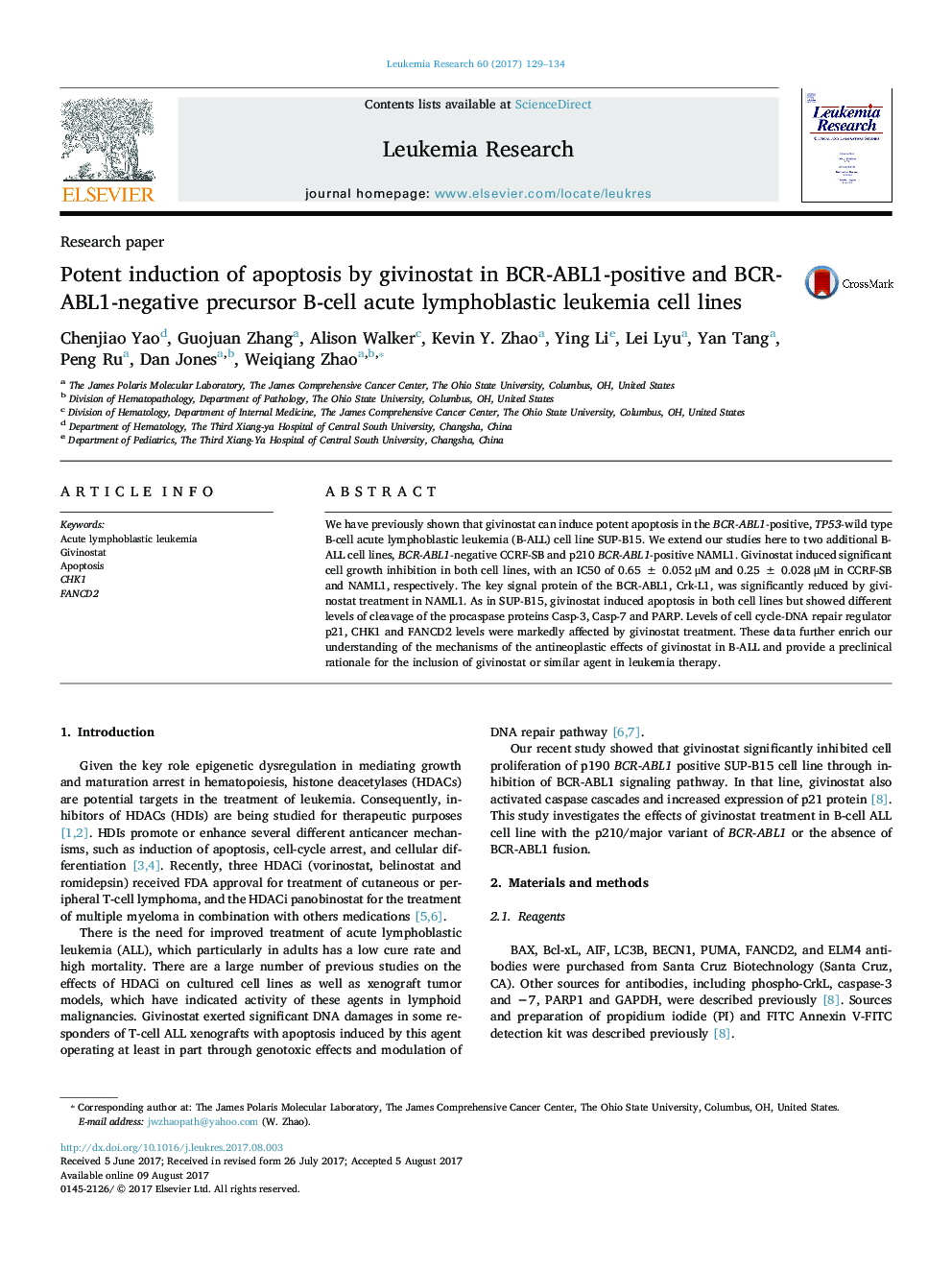| Article ID | Journal | Published Year | Pages | File Type |
|---|---|---|---|---|
| 5527730 | Leukemia Research | 2017 | 6 Pages |
â¢Givinostat induced potent apoptosis in B-cell lymphoblastic leukemia cells with different genetic background.â¢The mechanism of apoptosis induction relies on intact TP53 expression and p21.â¢Alternative mechanism of apoptosis is proposed.
We have previously shown that givinostat can induce potent apoptosis in the BCR-ABL1-positive, TP53-wild type B-cell acute lymphoblastic leukemia (B-ALL) cell line SUP-B15. We extend our studies here to two additional B-ALL cell lines, BCR-ABL1-negative CCRF-SB and p210 BCR-ABL1-positive NAML1. Givinostat induced significant cell growth inhibition in both cell lines, with an IC50 of 0.65 ± 0.052 μM and 0.25 ± 0.028 μM in CCRF-SB and NAML1, respectively. The key signal protein of the BCR-ABL1, Crk-L1, was significantly reduced by givinostat treatment in NAML1. As in SUP-B15, givinostat induced apoptosis in both cell lines but showed different levels of cleavage of the procaspase proteins Casp-3, Casp-7 and PARP. Levels of cell cycle-DNA repair regulator p21, CHK1 and FANCD2 levels were markedly affected by givinostat treatment. These data further enrich our understanding of the mechanisms of the antineoplastic effects of givinostat in B-ALL and provide a preclinical rationale for the inclusion of givinostat or similar agent in leukemia therapy.
